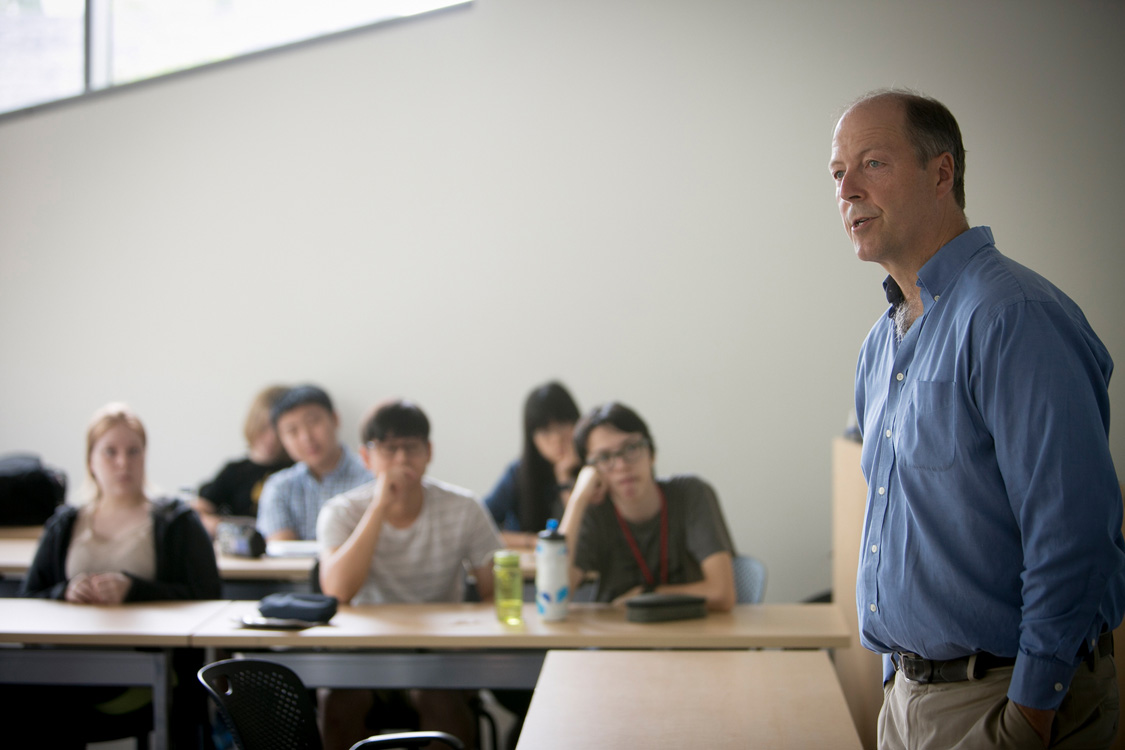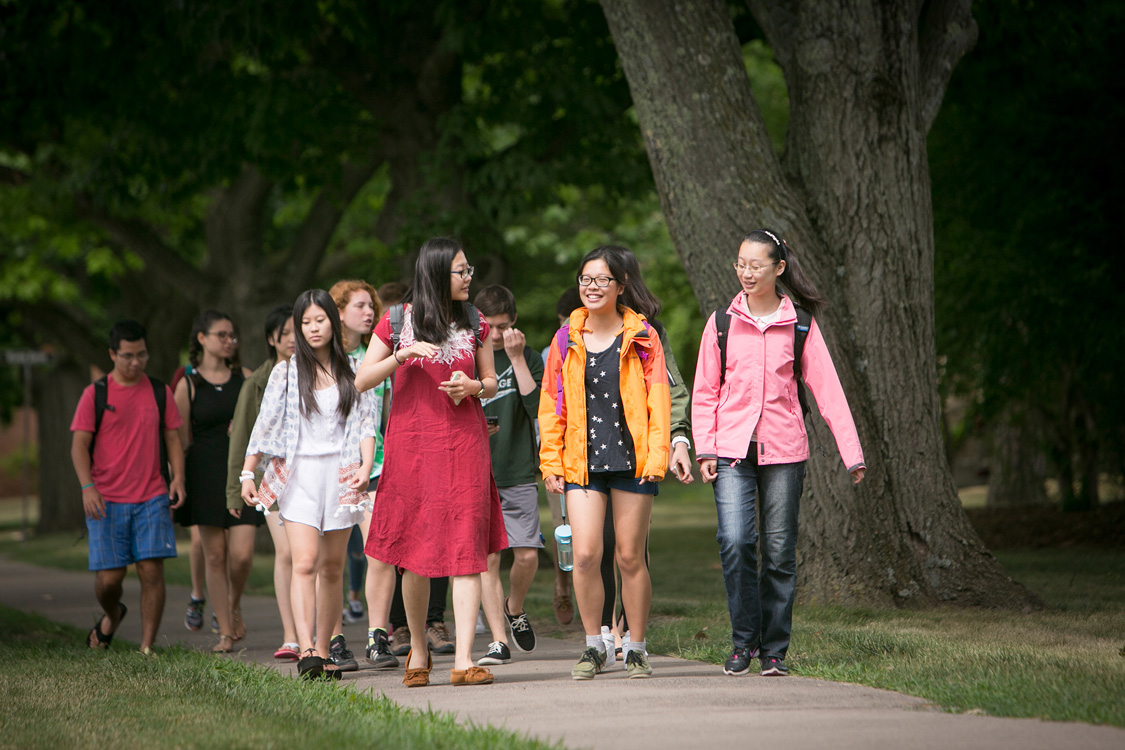Summer course maps history, future of green cities
By Daniel Aloi


The concept of “green” cities is no current fad, as environmental concerns have shaped human civilization and city planning for centuries.
Learning about more than ecology and sustainability in urban environments, high school students looked deeply into the technological and political forces that created and continue to shape cities and the global economy in a class led by Robert F. Young ’82, MRP ’96, Ph.D. ’07, as part of the Cornell Summer College program Creating Green Cities and Sustainable Futures.
Young's intensive three-week course Green Cities: Creating the Living City (also open to Cornell Summer Session undergraduates) blends philosophy with case studies and a broad sweep of history to study the current conditions and the future of cities in a geopolitical context.
Young defines green cities “not just as ‘business as usual with solar panels on top,’ but as the basis of a new economy and culture supportive of life and a more democratic society.” Ultimately, he said, the course is “an effort to frame out the possibilities and real-world workings of the next stage of human civilization.”
Topics discussed included water, energy, recycling, open space, the built environment, green infrastructure, urban agriculture and transportation.
“Every day in the world we hear about all these different problems and crises, but this class teaches us a common thread to link all of them together,” said Alex Yu, a student from New York City. “It’s a way of applying a philosophy to the way we as a society do things.”
April Zhang, Fermi Yu, Qiqi Chen and Phyllis Li all said pollution in their home cities in China inspired them to take the course. Chen said where she was pessimistic before, the readings and lectures “really give me hope, and I see how I can make the difference to change the future.”
Alp Eren, a student from Istanbul, said the class “helped me see the big picture in a variety of subjects, from economy to urban planning to our overall relationship with nature, [and] helped me clarify and get closer to finding my purpose and what I want to study.”
Young said hopeful signs of environmental action today include activists mobilizing after Hurricane Sandy to protect shorelines around New York City, efforts to preserve the land around city-supplying reservoirs in New York’s Catskill Mountains, and a surge in recycling since 1996.
“Now I can look at a news headline in any newspaper and I can use the theories that we learned here and understand better why things are happening,” said Lulu Feldman of Washington, D.C. “It’s pretty much changed how I thought about our entire future. Dr. Young talks about how we shouldn’t be pessimistic because … the green city can open up opportunities for innovation in our generation, so I feel that my entire future will be based off of this idea.”
Young’s research and teaching at the University of Texas at Austin focus on advancing the transition to sustainable cities through economic and environmental policy and planning. He has advised three governors on sustainable business issues and co-founded the University of Oregon’s Sustainable Cities Initiative.
He first taught Green Cities at Cornell in 1996, and has returned to teach the popular course the past three summer sessions as a visiting professor in the Department of Natural Resources. It is the first college course for many of his students, and he impresses on them the imminent global crises caused by overpopulation and climate change, and the importance of working together.
“One of the purposes of this class from the very start has never been just to convey information; it’s to give you tools to change the world and give you motivation to use those tools,” Young told students after their final exam. “And fortunately many people, in part because of this class, have taken up that offer” – including ridesharing entrepreneur John Zimmer ’06, who often mentions Green Cities in media interviews.
“I think it’s a really important class I wish more people were exposed to,” said Green Cities alumnus and teaching assistant Matthew Fellman ’03, an Ithaca High School teacher. “The fundamental framework of it is: You need to understand how things came to be the way they are so that you can … change things toward the direction that you want. It’s like a history course that includes the future. [Students] could not be more prepared … not just for operating in, but shaping the economy they graduate into.”
Media Contact
Get Cornell news delivered right to your inbox.
Subscribe